No products in the cart.

BOOT & FUN Berlin 2024 – We are exhibiting!
Hamburg, 17.11.2024 – After successfully participating in surf festivals in the north of Germany (Fehmarn) and a trade fair in the south,
For surfers who don’t live right by the sea and can’t wait for their next surf trip, rapid surfing is just the right sport! Rapid surfing is a relatively new term among surfers and means surfing in a river or in an artificial wave pool.
The key to rapid surfing is a standing wave on which surfers perform numerous tricks and also integrate elements from skateboarding and snowboarding. Rapid Surfing is becoming increasingly popular, which is why more and more Wave Pools and River Parks are being built. “Landlocked” Surfing offers you a variety of waves for every level, perfect for immersing yourself in the surfing world, improving your skills or simply having a good time on the water. Here you can find details about rapid surfing, where you can find standing waves in Germany, what equipment you need and much more.
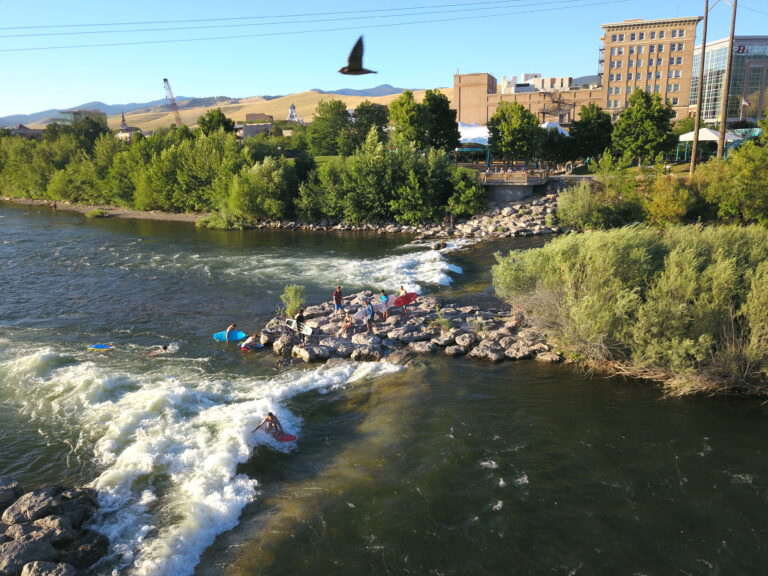
Although rapid surfing looks very similar to surfing in the sea at first glance, there are still some significant differences. First of all, the direction of the wave is reversed: In the sea, the waves form far out and run towards the shore, so that the surfer takes off at the front of the wave, in the direction of travel, and then covers a certain distance to the beach. In comparison, the river or wave pool wave remains in the same place. It is formed by an underwater obstacle or, depending on the type of construction, by an appropriately shaped river bed that is flowed against by fast-flowing water. This results in surfing against the direction of the current and thus against the pressure of the water. A wipeout is also the other way around: you are whirled forwards in the sea and backwards in the Wave Pool. But the washing machine feeling remains the same
If you’re surfing a standing wave, you don’t have to worry about wave selection. You don’t have to read waves or swell directions or wait for sets. With a wave in the river, you have much more consistency. Duck diving and paddling are also no longer necessary, as you jump into the water from the side of the river bank or the edge of the wave pool onto the surfboard. The classic line-up in the water will also be omitted, but will most likely be replaced by a queue of hungry surfers on land.
In addition, there is the difference in density between salt water and fresh water – especially advanced surfers might notice this in their surfing experience. In general, the beginner-friendly take-off and wave consistency allow for faster progress on a standing wave. So it’s worth booking a few sessions in a Wave Pool before heading into the sea.
Beginner slots can be booked in numerous Wave Pools, where you can try out with other surfers at the same level. Wellenwerk also offers special courses for children. Surf courses are also often offered, which include several surf sessions with instructors and theoretical knowledge. This guarantees a safe introduction to the sport. With the right feedback, you will learn quickly and mistakes can be avoided.
1. Wellenwerk in Berlin
The Wellenwerk in Berlin is one of the largest indoor wave centers in Europe. The wave is suitable for beginners, advanced and professional surfers. You can book individual surf sessions, beginner courses and even surf camps. Various surf contests are also offered. The advantage of the indoor wave is obvious: consistent waves regardless of the weather, warm temperatures.

2. RheinRiff Düsseldorf
The RheinRiff in Meerbusch near Düsseldorf is the largest indoor surf hall in the world. Various surf courses and sessions are offered to suit your individual needs. Professional coaching, trained instructors, personal feedback, surf theory and video analysis are just some of the exciting learning content at RheinRiff. Trainers like Ronny Torres will definitely be able to teach you the fun of surfing perfectly and serve as a role model for you when they surf at RheinRiff themselves.
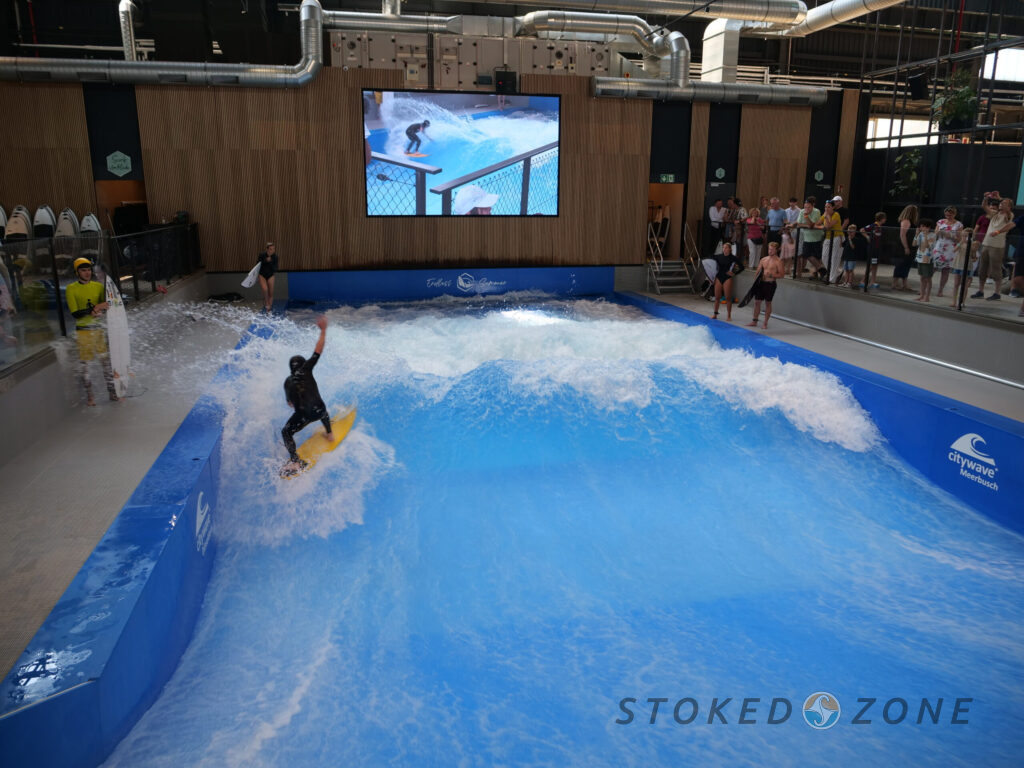
3. Surf Langenfeld
Surf Langenfeld is located near Düsseldorf. An artificial standing wave from the company Unit Wave is integrated into a natural lake. So you can enjoy surfing outdoor, especially in good weather. Various courses with professional trainers can be booked. Next door you have the opportunity to go wakeboarding on a total of four lanes or water skiing if you’re not exhausted after your surf session 
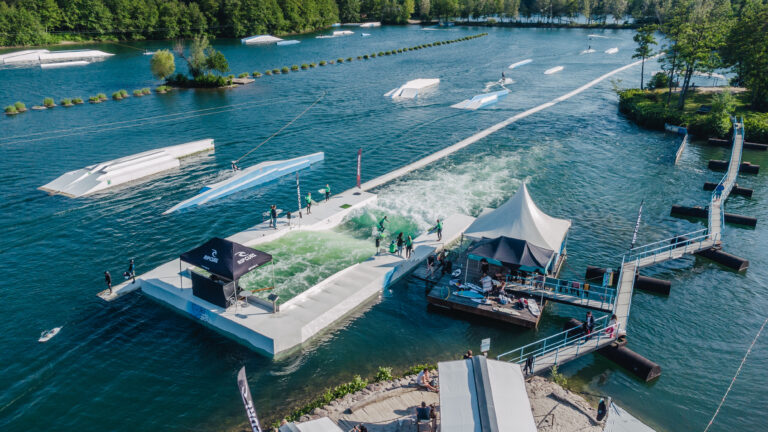
4. Jochen Schweizer Citywave in Munich
At Jochen Schweizer’s Citywave in Munich, you can look forward to perfect waves in a continuous loop. 26° water temperature and the possibility to surf 365 days a year will make your heart beat faster. The waves are tailored to every level and there are similar courses to those at Wellenwerk, RheinRiff or Surf Langenfeld. Professional surf instructors ensure a safe environment and quick learning success.
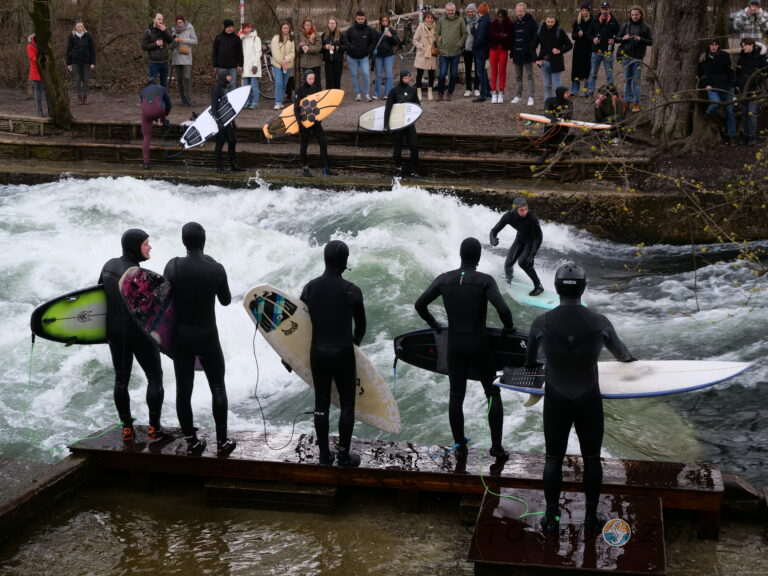
1. Eisbachwelle in Munich
Probably the most famous wave for River Surfing in Germany is located in the English Garden in Munich – some call the city the surfing capital of Germany! The wave is famous among surfers worldwide – no wonder given the size and consistency of the wave. Due to the strong currents, the wave is quite challenging and is therefore only suitable for advanced surfers and professionals.
2. Leinewelle in Hanover
The Leinewelle in the heart of Hanover is also a semi-natural wave, as the built-in hydraulic system creates a surfable wave for all fans of Rapid Surfing. The wave can adapt to the water level of the Line, creating an almost year-round surfing experience. To go surfing in the Leinewelle, you have to become a member of the Leinewelle e.V. association.
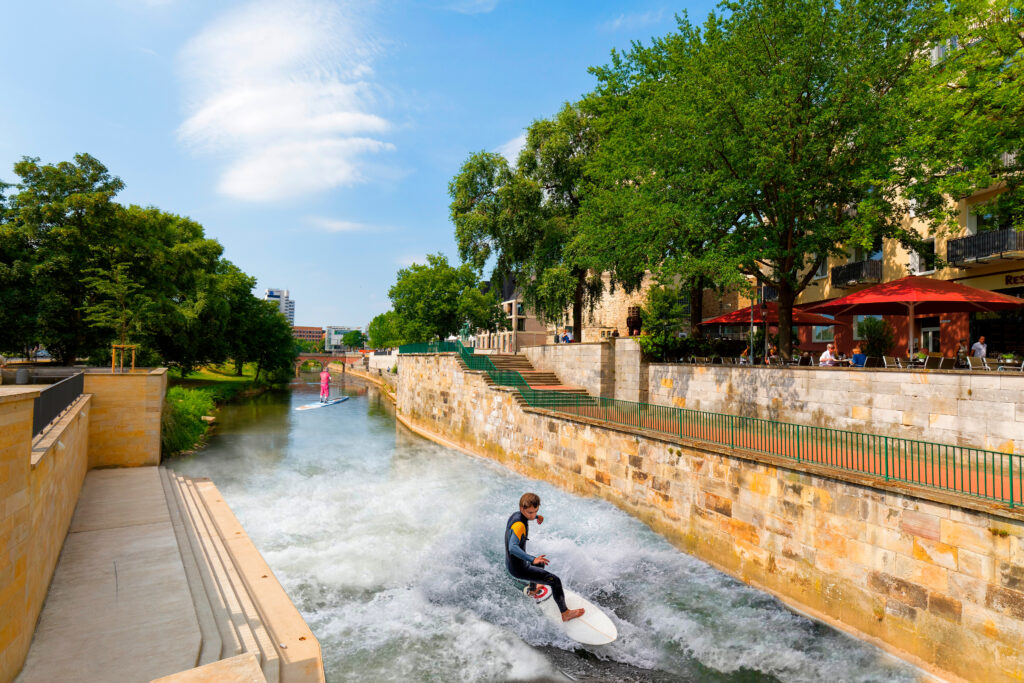
3. Fuchslochwelle in Nuremberg
Opened in 2022, the river wave attracts visitors from all over Germany. The height, shape and pressure of the eight-meter-wide wave can be adjusted, allowing a variety of waves to be generated to suit every taste.
4. Blackforestwave in Pforzheim
In 2021, the Blackforestwave was opened near the Black Forest in Baden-Württemberg. Here, ten hydraulic cylinders ensure that the waveform changes and can be lowered at will. Surfing in the middle of Pforzheim!
5. Isarwelle in Eastern Bavaria
You’ll find a true paradise for Rapid Surfing in Eastern Bavaria near Plattling. A roller is used to simulate a whitewater stream that creates fantastic waves. So fantastic that even German and international championships are held here.
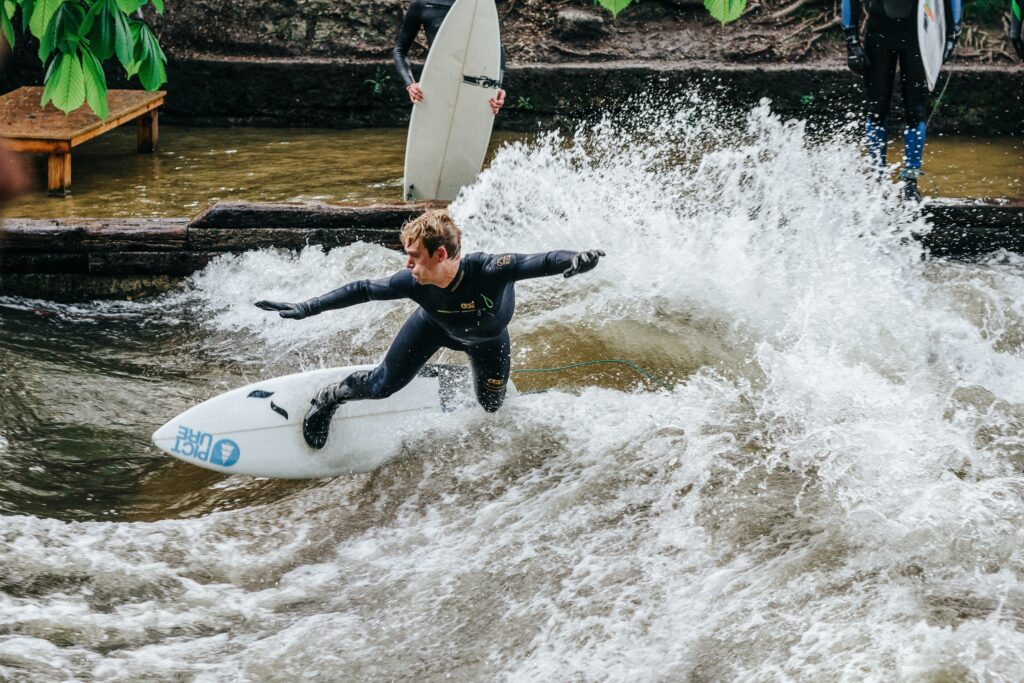
The following table contains all standing waves, whether river wave or artificial wave, indoor and outdoor. We have entered country, city or GPS location, internet address, and other information in the table. ..
Simply sign up for our newsletter below with the keyword “Rapid Surfing” and receive the entire table as a pdf by e-mail, free of charge.

River surfboards look very similar to regular surfboards. A leash, pads and fins are also part of Rapid Surfing. However, the shape and volume of the board differ when surfing a standing wave. As there is no paddling and take-off as in the sea, a river surfboard requires less volume, so it is somewhat shorter and narrower. In addition, surfboards for standing waves are usually manufactured to be very robust in order to withstand impact with rocks or river barriers. Therefore materials such as epoxy and carbon fibers are used. In many river facilities, the walls or even the base are made of concrete, which is why the rails and fin boxes are often additionally reinforced.
Wearing a surf helmet is also recommended in some river waves, as many waves are powerful and have a hard surface. The Eisbachwelle in Munich is a good example of this.
In Wave Pools, soft surfboards are usually provided by the organizer, which are ideal for beginners and children.
Depending on the river wave or Wave Pool, it is of course also worth investing in a wetsuit. In some indoor Wave Pools, the water temperature is a pleasant 23-27° C, where you only need regular swimwear and possibly a rash vest – so it almost feels like being in the tropics. In the Eisbach in Munich, on the other hand, it can get very cold in winter, which is why surfing with thick neoprene, neoprene gloves and shoes, as well as a hood are a must. You can find more information on this topic in our blog“Surf equipment – what do I need for surfing?”.
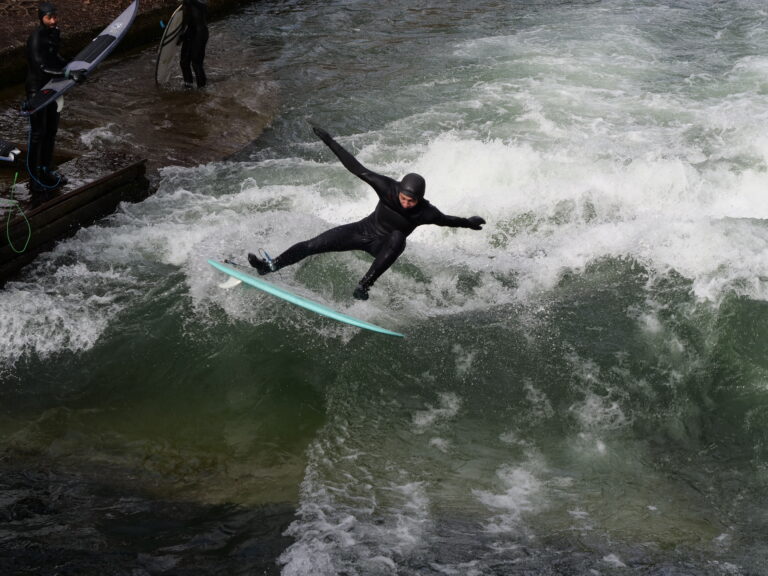
The surfer enters the wave sideways from the edge, jumping directly into the wave with the board. Beginners usually sit on the shore first and glide into the water together with the surfboard and directly into the wave. An alternative technique is rope-assisted surfing, where you attach the rope to the shore and hold the other end in your hand to be guided towards the wave.
The top tips for starting out in a Wave Pool for beginners:
Ronny Torres from RheinRiff shows you the start at the Surf Open at Wellenwerk Berlin and surfs off:
In order to move on the wave and perform maneuvers, the focus is often placed on the movement of the hips instead of determining the direction of travel with the feet. Turns with the hips provide enough momentum for tricks of all kinds. The load on the surfboard is much more on the back leg compared to surfing in the open sea.
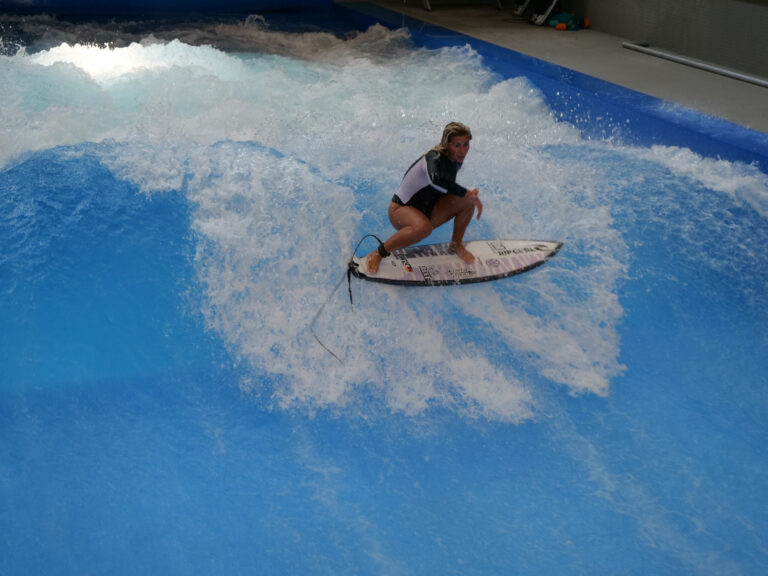
Step 1: Master surfing on a standing wave. Step 2: Learn tricks & the surfing fun can begin! Once you have mastered the basics on a standing wave in a river or a wave pool, you can try out a variety of maneuvers in the sea. After front and backside turns, you can also try out various tricks such as roundhouse cutbacks, snaps, tail slides and airs. Classic tricks for Rapid Surfing are also the “Backside Flatspin 360”, “Big Spin” and “360 Shove it”.
Due to the wave dynamics, tricks similar to skating or snowboarding can also be attempted – let your surfing creativity run wild! The tricks are diverse and are constantly evolving. The energy saved on paddling can also be invested in repeated practice, which guarantees rapid learning success.
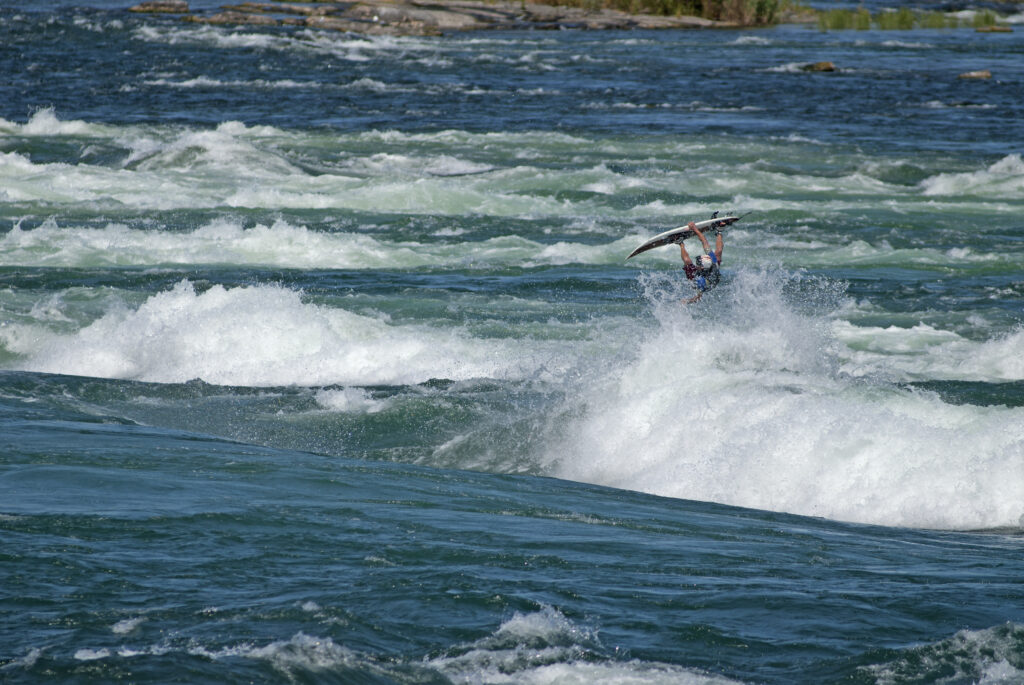
Surfing on a standing wave is the ideal way to prepare for surfing in the sea. Without paddling, duck-diving and wave reading, you can start surfing straight away – and in most waves you can do it standing up at the start. In addition, you are always at the same level and don’t move forwards towards the shore like in the sea. The consistency of the waves also means that beginners can practice for all they’re worth. This allows you to get a good feel for the surfboard and surfing, which makes it much easier to get started surfing in the sea.
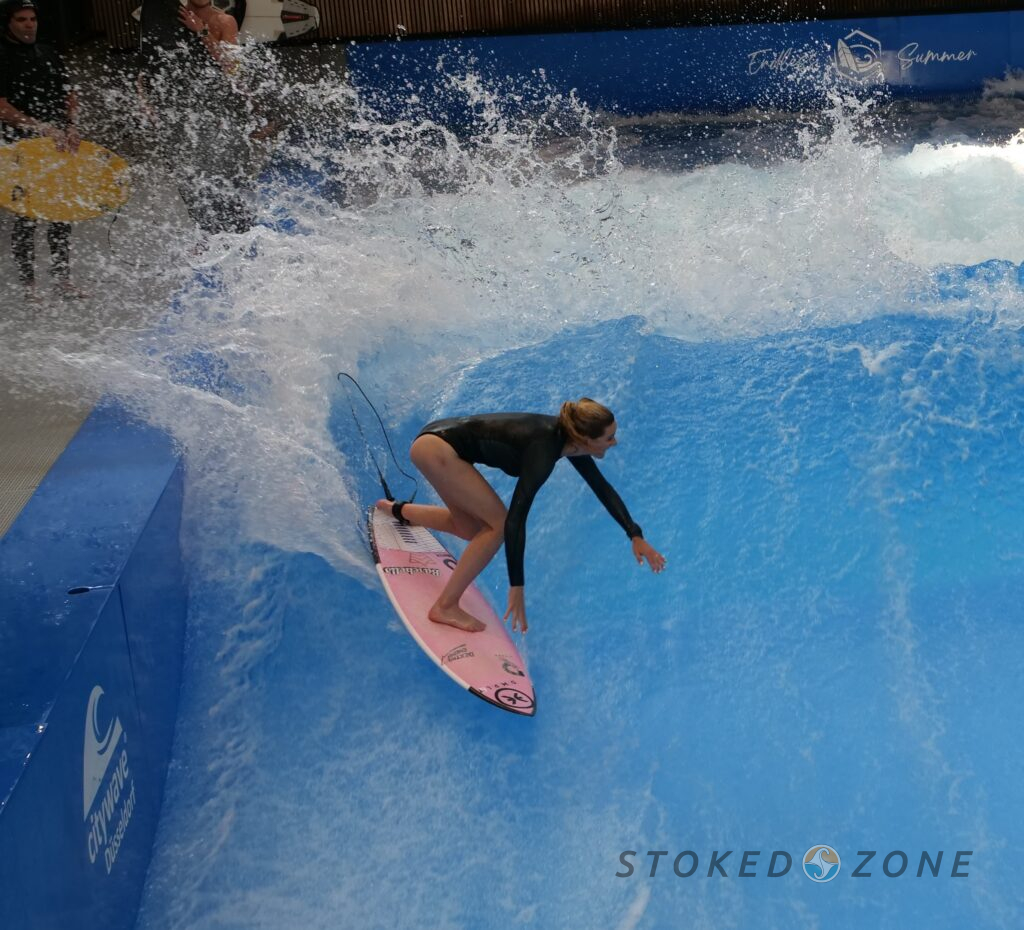
If you want to watch the pros among the Rapid surfers live, you can follow the tours organized by the Rapid Surf League, where the best surfers compete against each other and thrilling the audience with breathtaking tricks.
Here the pros Valeska Schneider, Janina Zeitler, Ben Neumann and Marius Gerlach in action:
In 2023, the top 3 surfers were Valeska Schneider, Ina Schorr and Jana Wessels. Janina Zeitler is an exceptional surfer in Rapid Surfing and also surfs in the Pro League in the open sea. The names Kathi Hörhan, Maya Sauer and Anika Weizel are also well known if you are familiar with the competition. Valeska Schneider is one of the best-known surfers in the discipline of Rapid Surfing. The German professional surfer can also often be met in the sea – the more waves, the better! Among the men, the top 3 in 2023 are Nicolas Marusa, David Schütz and Frederick Runge. Marius Gerlach and Vincent Schneider are also among the best Rapid surfers in Germany. Ben Neumann is a member of the German Olympic Para-Surfing team. He is blind and his coach father helps him to surf via a voice radio link.
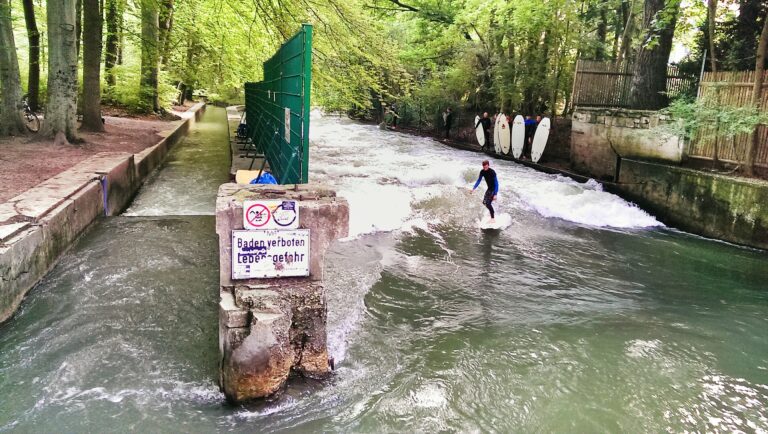
Are you curious and want to conquer the world of Rapid Surfing? To get started, we definitely recommend booking a beginner’s course. This means you learn the technique and theory from experienced coaches, which guarantees safety and the learning process is definitely faster than without feedback from the coach. During the course, you can also get advice on which river surfboard is best suited for beginners. In terms of equipment, a helmet is also recommended, as you can expect some wipeouts in the first few sessions. Surfing is most fun with friends – so grab a buddy and hit the waves!
Your Stoked Zone Team

Hamburg, 17.11.2024 – After successfully participating in surf festivals in the north of Germany (Fehmarn) and a trade fair in the south,
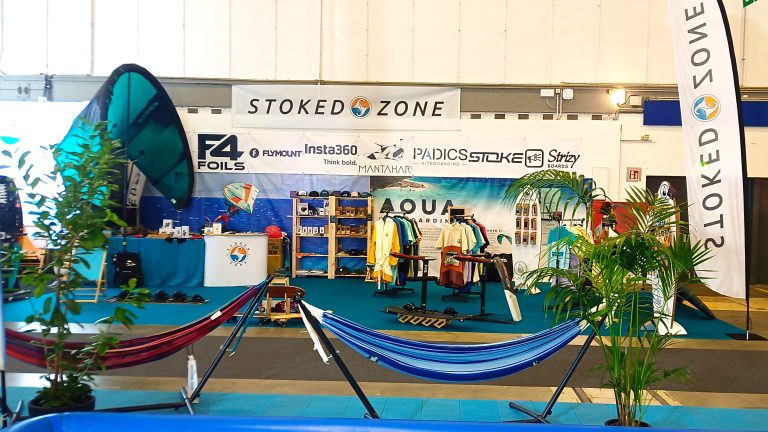
Hamburg, 10.12.2024 – Boot & Fun Berlin was another success for the development of the Stoked Zone as a platform for surf sports
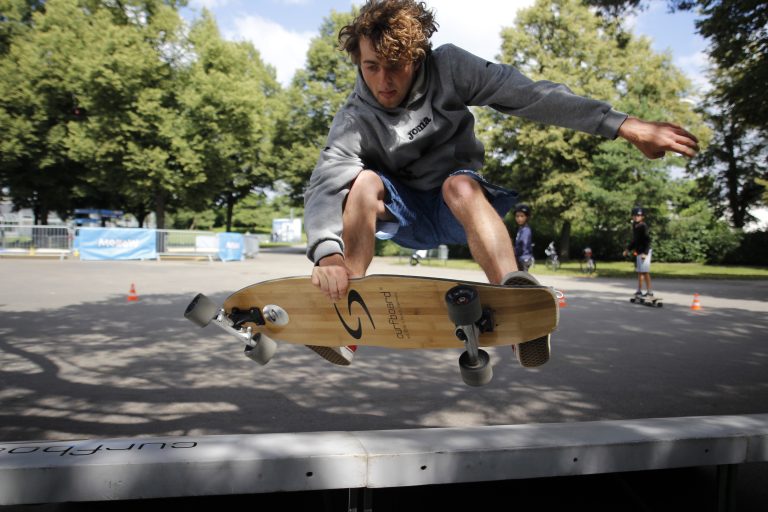
Hamburg 25.11.2024 We are very pleased to announce our partnership with the premium surfskate brand Curfboard.Curfboard is a German company with a